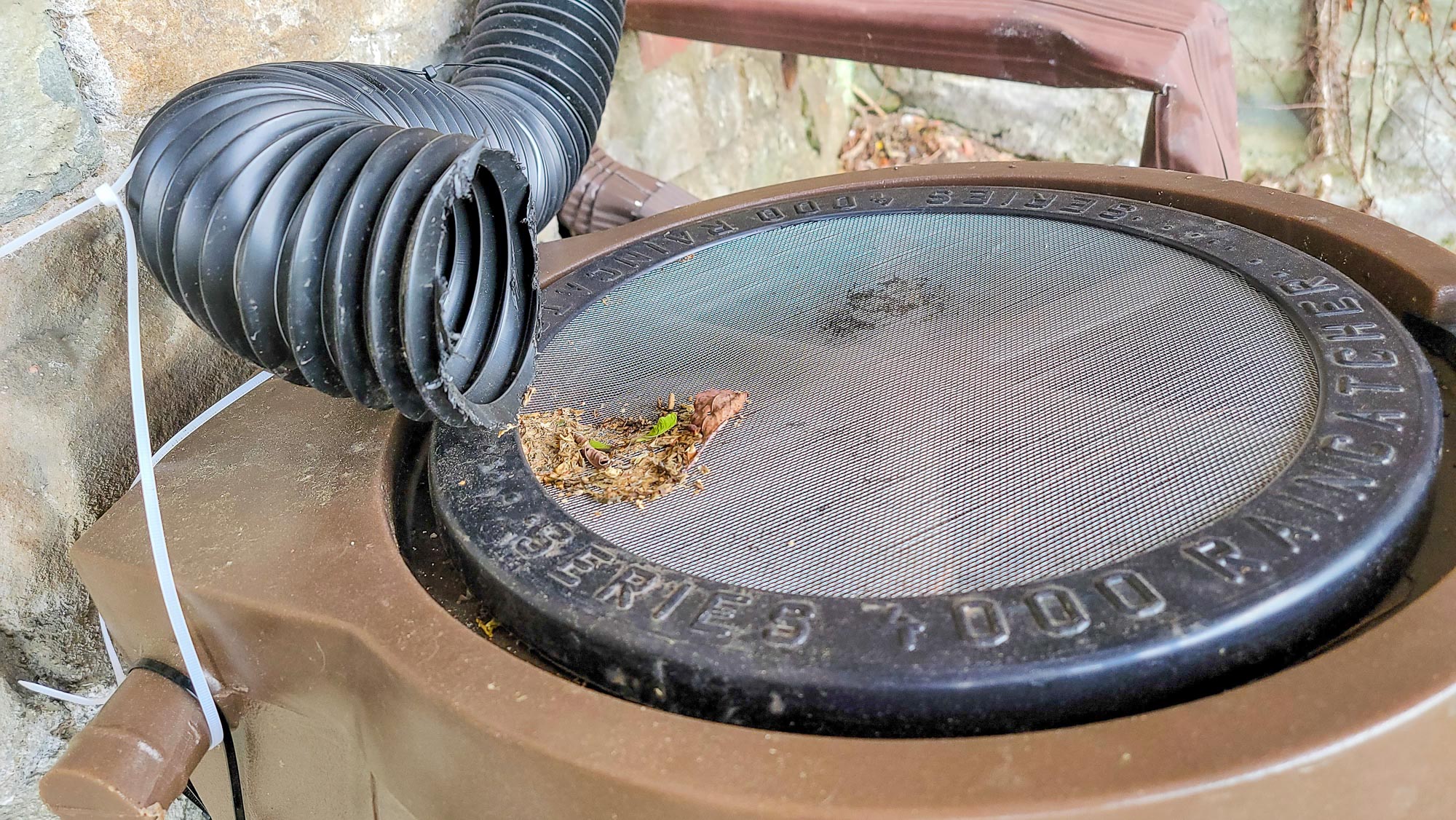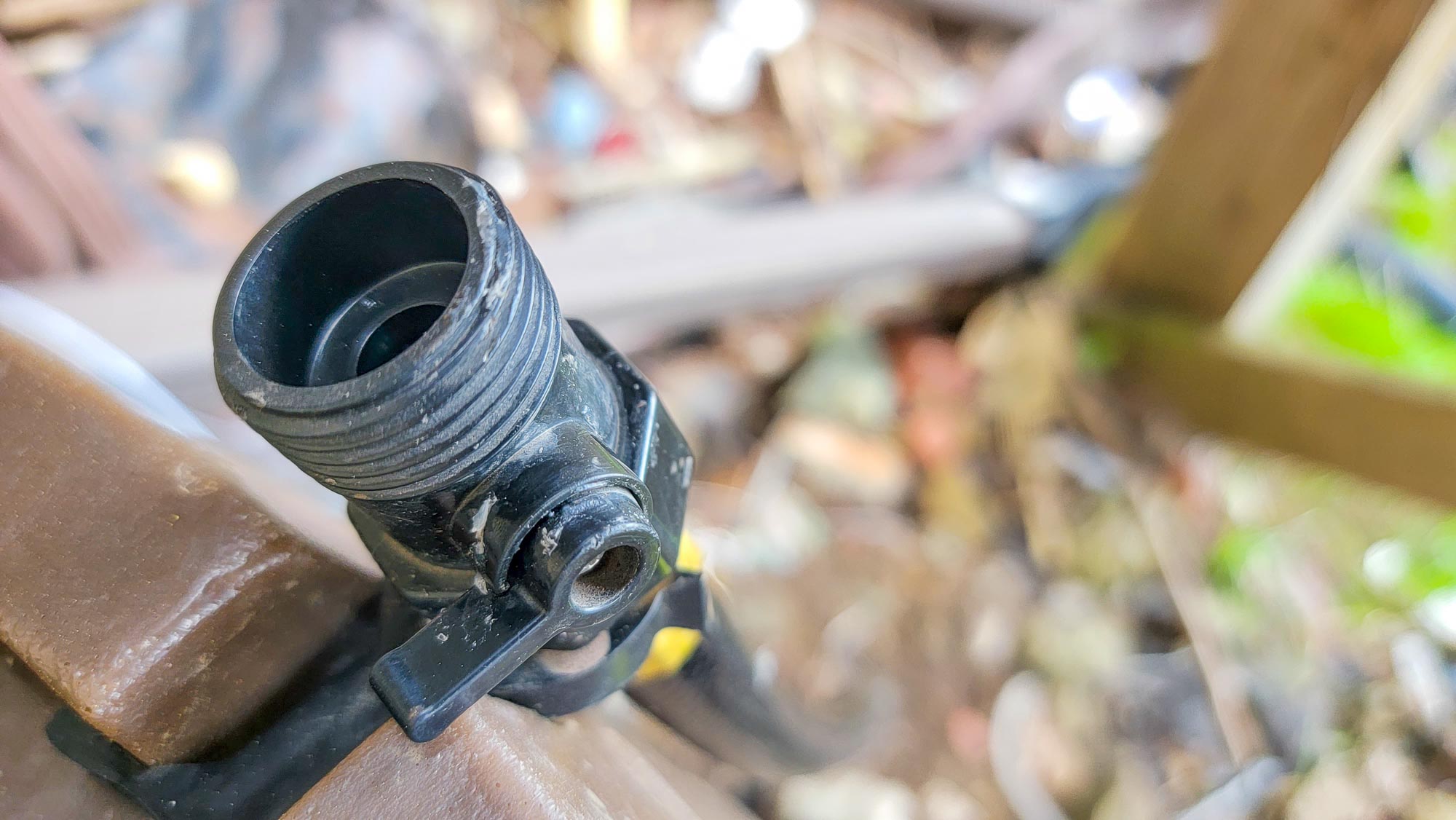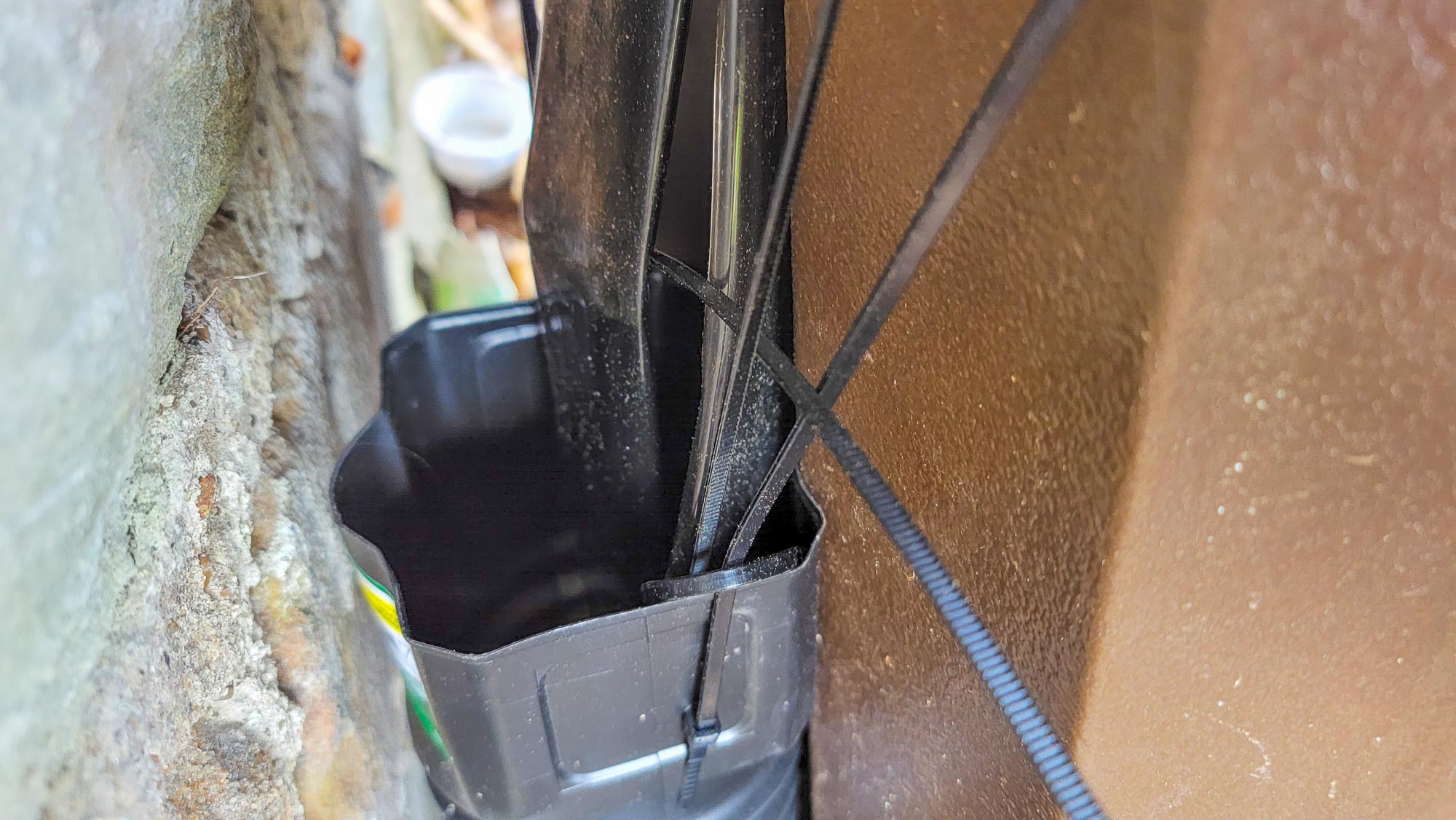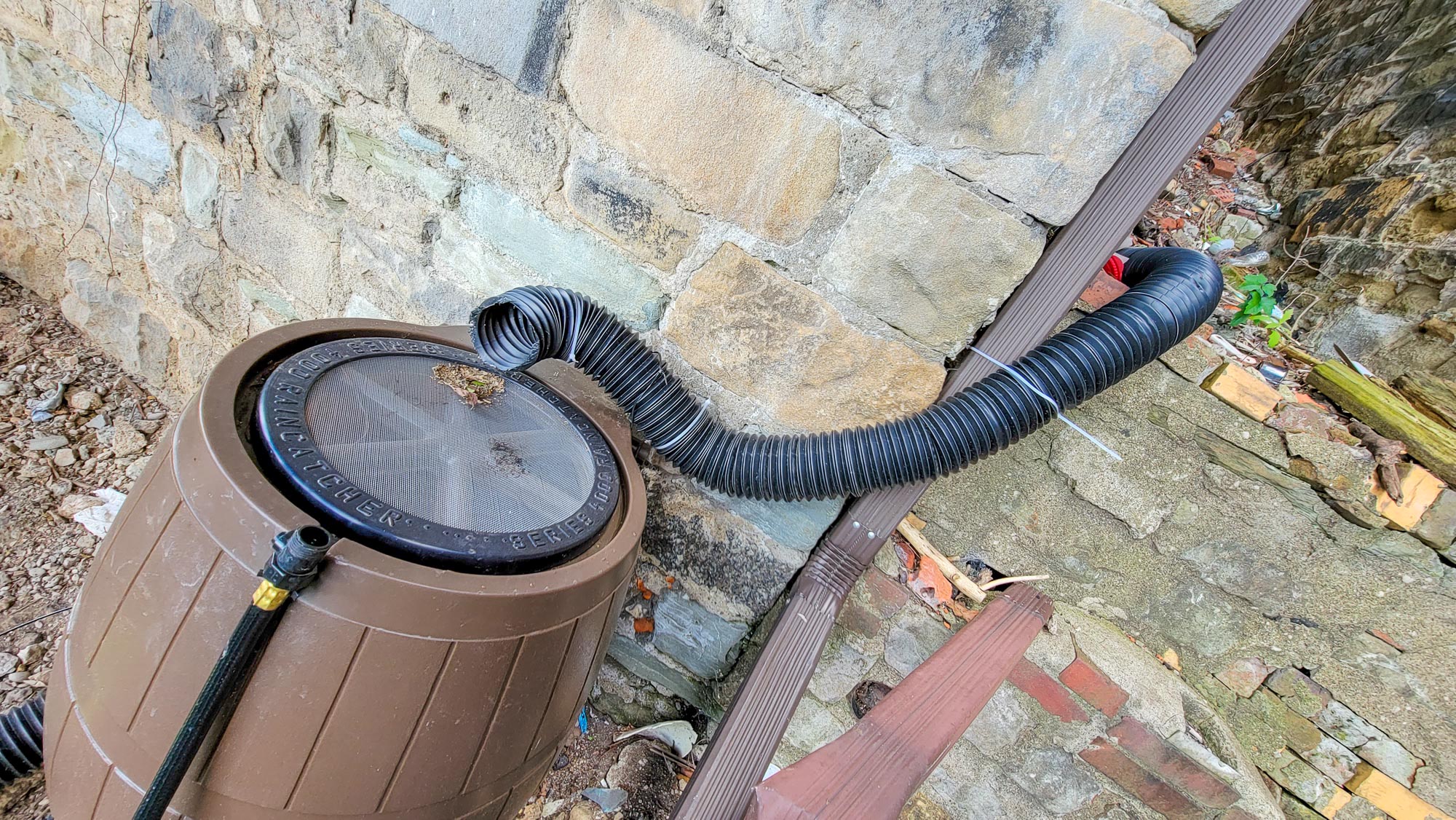Disclaimers: Our site uses demographic data, email opt-ins, display advertising, and affiliate links. Please check out our Terms and Conditions for more information.
As part of our project here at Hipster Homesteaders, we wanted to help make our home as sustainable as possible. This includes making changes like expanding our garden to grow more of our own food, getting beehives, installing a composter, eventually buying solar panels, and of course, helping our water consumption by installing a rain barrel!
While we knew that having a rain barrel would generally be a good thing, as our water consumption often spikes considerably in the summer months when our garden is incredibly active, we didn't quite know just how much our savings would be.
So after installing our rain barrel, we tracked our consumption and had some rather interesting figures. So in this one, we thought we'd share what we found plus ways to calculate if a rain barrel is a good economic decision for your own home!
How Long Does a Rain Barrel Take to Fill Up?
When we first installed our rain barrel, we had a few major questions, namely how long will it take to fill up, how much water will we actually use from it, and by extension, how long will it take to pay itself off.
For the first question, we found the answer pretty fast- the rain barrel filled to the top in approximately one rainfall.
While it was a bit surprising to us that a 50-gallon rain barrel would fill up after just one rain, when we take a step back to share the math behind it things start to make sense.
You see, we were thinking in terms of the fact that a 32″ tall barrel would simply be collecting rain as it falls from the sky. If you let nature fill it on its own, you would need, of course, 32″ inches of rain which for us in Pittsburgh can take almost an entire season (we get about 38″ annually). But when you hook a rain barrel up to your gutter drainage, the fill rate is amplified.
Gutters not only collect the rain that falls into them directly, but also all of the rain that falls on your house outright. So depending on how big your roof is for the gutter that you'll use to collect rainwater from, your fill rate will be much faster.
For our house, which is not terribly big, we filled our barrel from a gutter collecting water from one half of our roof. The surface area of this was approximately 500 square feet. In just one solid rain of about 1″, our rain barrel was collecting approximately 42 cubic feet of water- or 311 gallons!
So when it comes down to it, with only just one rain and a roof of sufficient size, you'll likely be able to capture more water than your barrel can handle- hooray free water!
Want to calculate how much water you may be able to collect? Use the following equation:
- Volume (Gallons) = 0.623 * Rain Amount (inches) * Surface Area of Roof (square feet)
- Example: 0.623 * 1 inch rainfall * 500 square foot roof = 311 gallons
- Note: 0.623 is 7.48 gallon/cubic foot divided by 12 inches/foot
How Much Do You Use a Rain Barrel? It Varies
Now, the bigger question. You have all of this water quickly collected in a rain barrel- how much are you actually going to use and when will it save you money overall?
The answer, of course, is it varies and we need to break those questions up into their own respective sections.
Our rain barrel is located under our deck, where we do most of our container gardening, and we decided very early on that it wasn't going to be practical to haul water 30 feet up our deck to water our plants (yet). The barrel itself would be used for our new garden expansion on our hillside which at the time of publication included a root vegetable patch, ten or so young fruit trees, a dozen or so berry bushes, a raised bed planter, and water for our beehive feeders.
So when it comes to saving us money, we never quite saw a drop in our water bill, but rather simply didn't see an increase because all of these new plantings weren't hitting our faucet.
With regards to consumption, on a mild day at 75 °F after a few days without rain, we could water all of the above with about 10 L of water. On a hot day pushing into the 90 °F we would use 20, 30, or sometimes even 40 L of water- especially if that heatwave was ongoing.
Extrapolating out over the course of a season, we have the following water usage:
- Watering Days: ~200 (approximately 75% of the year for the growing season and 75% of the days requiring additional water).
- Water Usage: 20 L/day on average.
- Total Water Used: 4,000 liters (or ~1,060 gallons)
Our water fees in western Pennsylvania run approximately $13.10 per 1,000 gallons of water and $6.99 per 1,000 gallons of wastewater (plus other minimum fees per bill which we won't factor in here). So, it is reasonable to assume that we spend approximately $20 per 1,000 gallons when it is all said and done.
This means that our annual savings for having a rain barrel for our modest expansion garden is $20- or just under seven years for payback when it is all said and done for a $140 barrel. Not terribly great when it comes to our water consumption, we're not going to lie.
But part of this goes back to the fact that our expansion garden is just that- a new, small garden that will be growing more over time. If we double our garden size next year, for example, we'll double our water use and our payback period goes down to four years. If we triple our garden size next year, our payback period goes down to three years. If we figure out a way to easily haul water to our main deck, which is on our agenda, our payoff period goes down even faster.
So, when we say it varies to answer the question of how long it takes for a rain barrel to pay itself off, we mean it. The only way you'll know for certain is to do the math yourself for your own specific consumption and factor in local water rates. If you are pushing 30, 40, or 50 L of water used per watering day, or live somewhere that has water rates much higher than ours, we wouldn't be surprised if a rain barrel can pay itself off in just one or two years.
If not, well, a rain barrel may have less of a financial incentive and be more one for doing a minor part to conserve water outright. This element, of course, cannot be discounted at all.
Want some quick math? Here are rough payback periods for different levels of water consumption for a $140 rain barrel (assuming 200 days of water required and $20/1,000 gallons):
- 10 L/day: 13 years
- 20 L/day: 6.6 years
- 30 L/day: 4.4 years
- 40 L/day: 3.3 years
- 50 L/day: 2.6 years
- 60 L/day: 2.2 years
- 70 L/day: 1.8 years
- 80 L/day: 1.6 years
Payback period can be calculated using the following equation:
- Payback Period (Years) = (Cost Per Barrel * 1,000 * 3.78) / (L per day consumption * watering days * $/ 1k gallon water)
- Example: ($140 barrel * 1,000 * 3.78 ) / (20 L/day use * 200 days * $20/1k gallons water) = 6.6 years.
- Note: 1,000 is calculating out per 1,000 gallons and 3.78 is the conversion from gallons to liters.
What All You Need to Set Up a Rain Barrel
Depending on the rain barrel you buy, you don't need that much to get it set up. Many rain barrels come with an overflow system built in (make sure yours has this!), and really your job there is to determine how many extra pipes or drainage lines you may need for your gutters to make it all work together.
Our setup included the following items as is visible in the photos in this article:
That's it!
It is important to note, however, that a level rain barrel is key. Our barrel's overflow was admittedly rather high in the barrel itself (on the back side), and when we first installed it there was a slight forward tilt as it was not perfectly level. This was enough to cause the barrel to overflow into the ground as opposed to using the overflow lines and we had to drain it to re-level.
Likewise, the plastic line that came with our particular rain barrel was pretty much useless and kept sealing together whenever it was wet. We ultimately used a proper gutter drainage line that we zip tie connected to the rain barrel to allow the supplied plastic to be a lot shorter in length (originally it was designed to run down the back of the barrel and underneath via a custom-fitted groove to allow for drainage out the front- we simply did not like the design).
As such, the number of accessories you may need to buy for your barrel will depend a lot on which barrel you buy outright and your own personal setup. The above list is simply a starting point and you may have to make a few orders to get things working the way you like it.
So while our rain barrel may not have a great payoff period just yet, our garden expansion in the coming years will ensure we get there quickly. But, as with most things, your mileage may vary for your own unique scenario.
Do you have a rain barrel? What do you think of it? Comment below to share!






